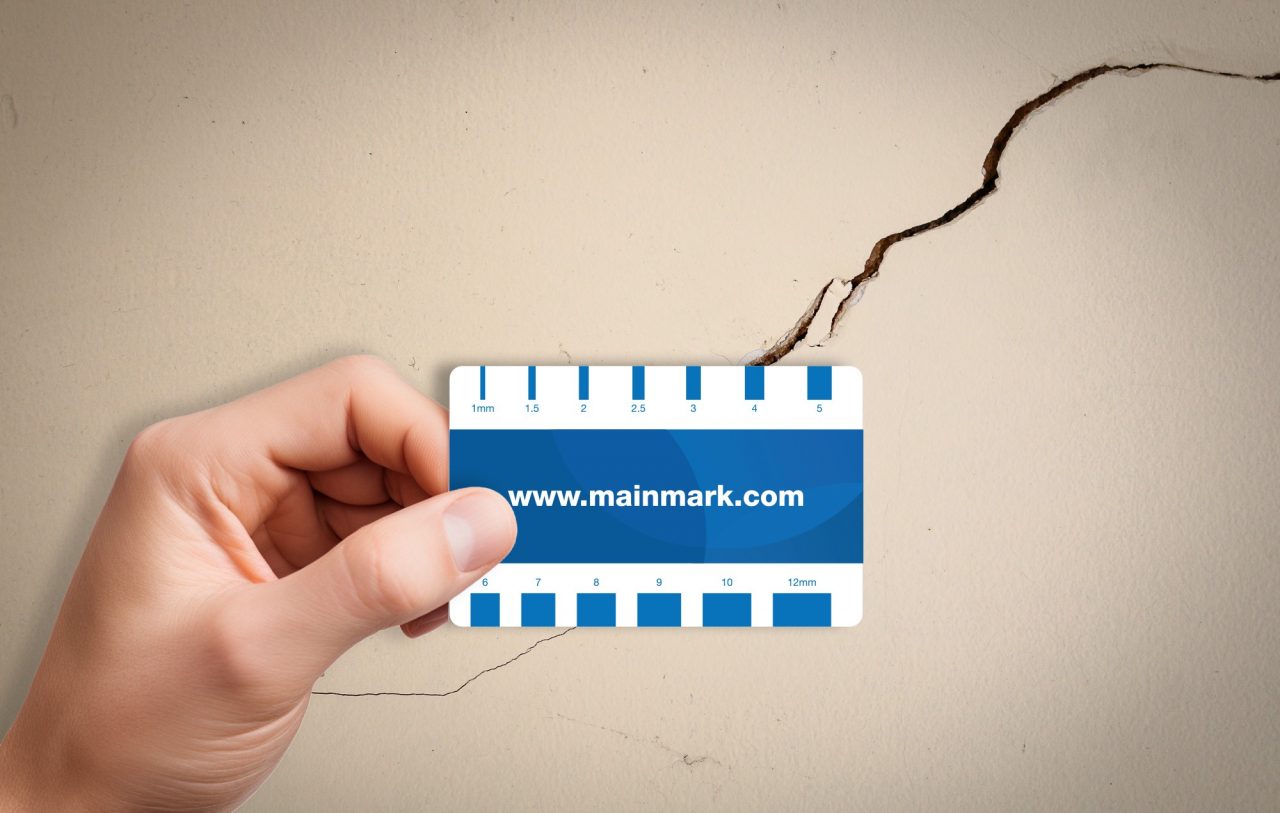Fixing structural cracks in walls requires a thorough understanding of their causes, proper preparation, and the right repair materials. Various factors, including foundation settlement, moisture intrusion, thermal expansion and contraction, poor construction practices, or seismic activity, can cause cracks. Some cracks are purely cosmetic, while others indicate serious structural issues that require immediate attention.
Structural cracks in walls should never be ignored, as they can signal serious issues with your home’s stability. Small, non-structural cracks can often be repaired using simple patching techniques, while large, widening, or deep cracks may require epoxy injection, masonry repair, or even professional intervention.
Proper assessment, preparation, and use of the right materials ensure a long-lasting fix. If in doubt, consult Mainmark to evaluate and repair your foundation issues.
Step 1: Assess the Type and Severity of the Crack
Before beginning any repairs, it’s crucial to determine whether the crack is a cosmetic issue or a sign of a deeper structural problem. Here’s how you can assess cracks:
- Hairline cracks (less than 1/16 inch wide): Often occur due to minor settlement, temperature fluctuations, or drying shrinkage in plaster or drywall. These cracks are usually non-structural and can be repaired with simple patching.
- Vertical cracks: If found in foundation walls, these cracks could indicate normal settlement. However, if they continue to widen over time, they may suggest foundation movement.
- Diagonal cracks: Usually found near windows, doors, or corners. Small diagonal cracks may be due to normal settling, but large or widening ones could indicate foundation shifting or structural stress.
- Horizontal cracks: These are the most concerning, especially in foundation walls. They often indicate excessive pressure from soil or water buildup and may require professional intervention.
- Stair-step cracks in brick or masonry walls: These often occur when part of the foundation moves while another remains stable. If they are large, they could be a sign of significant structural problems.
- Cracks wider than 1/4 inch: Large or widening cracks should be monitored closely. If they continue to expand, professional assessment is recommended.
When to Call a Structural Engineer
- If cracks are wider than 1/4 inch or continue to grow over time.
- If doors and windows become misaligned or hard to open/close.
- If you notice multiple cracks appearing at once.
- If horizontal or stair-step cracks are found in foundation walls.
- If water seepage or bulging walls accompany the cracks.
Step 2: Prepare the Crack for Repair
Once you’ve assessed the severity of the crack, the next step is preparing it for repair. Proper preparation ensures that the repair materials adhere correctly and that the problem does not recur.
- Clean the crack: Use a wire brush or vacuum to remove loose debris, dust, and dirt. A clean surface allows the repair material to bond effectively.
- Widen the crack (if necessary): For deep cracks, use a chisel and hammer to slightly enlarge the opening. This creates a V-shaped groove, which helps the repair material grip better.
- Remove loose material: After chiseling, remove any additional debris with a vacuum or compressed air.
- Dampen the area (for masonry or concrete repairs): Lightly misting the crack with water helps prevent the repair compound from drying too quickly and cracking again.
Step 3: Select the Appropriate Repair Material
The right repair material depends on the type of wall and the severity of the crack. Below are the best materials for different situations:
For Concrete Walls
- Epoxy or Polyurethane Injection: Best for deep, non-moving cracks. Epoxy injections restore strength, while polyurethane is flexible and ideal for waterproofing.
- Hydraulic Cement: Expands as it sets, making it great for sealing active leaks in foundation walls.
For Masonry (Brick or Stone) Walls
- Cement-Based Mortar: Suitable for filling deep cracks in brick or block walls.
- Flexible Masonry Sealant: Ideal for smaller cracks that need some flexibility to accommodate movement.
For Drywall or Plaster Walls
- Joint Compound and Mesh Tape: Perfect for repairing small to medium-sized drywall cracks.
- Elastomeric Caulk: Flexible and great for small cracks that may expand or contract.
Step 4: Apply the Repair Material
The application process depends on the type of material you are using.
For Concrete Walls (Epoxy or Polyurethane Injection)
- Install injection ports along the crack at intervals of 6 to 12 inches.
- Seal the surface with epoxy paste to prevent leakage during injection.
- Inject the epoxy or polyurethane starting from the bottom and working upward.
- Allow the material to cure before removing the injection ports.
For Masonry Walls (Brick, Block, or Stone)
- Mix a cement-based mortar if using a traditional repair.
- Apply the mortar into the crack using a pointing trowel.
- Smooth the surface and mist with water periodically for proper curing.
For Drywall or Plaster Walls
- Apply joint compound over the crack using a putty knife.
- Embed fibreglass mesh tape over the compound.
- Apply multiple layers of compound, sanding between coats for a smooth finish.
- Prime and paint for a seamless look.
Step 5: Prevent Future Cracks
Addressing the underlying cause of the crack is crucial to prevent it from reappearing.
- Fix foundation issues:
- If cracks result from foundation settlement, you may need underpinning.
- Improve grading around your home to direct water away from the foundation.
- Control moisture:
- Install proper drainage and downspouts to prevent water buildup near the foundation.
- Use a dehumidifier in humid areas to minimize expansion/contraction cracks.
- Reinforce walls (if necessary):
- For severe foundation cracks, carbon fibre strips or wall anchors can provide additional strength.
- Regularly inspect for new cracks:
- Monitor existing cracks and take action if they grow or new ones appear.
Want to learn more about Cracked Walls?
Structural cracks in your walls are clear indicators of potential subsidence and foundation issues. Ignoring these warning signs can result in costly damage to your property.
Mainmark offers an innovative solution that effectively and efficiently addresses these concerns, ensuring your property remains secure.

Start measuring wall cracks from the convenience of your home.
If you notice wall cracks around your home that are:
Large cracks that start at windows, doorways or corners of buildings
Cracks wider than 5mm
Jagged, horizontal or vertical, zig-zagged, stepped in brickwork or follow mortar line
These characteristics may indicate weakness in your property’s foundation.
To help you discover if the cracks in walls around you home could be due to subsidence, we’ve developed this handy tool. Download our FREE crack gauge and start measuring and monitoring the wall cracks around your home now!
What to Do If You Notice Cracks in Brick
Step 1: Monitor the Cracks
- Take photos and measure the width of the crack.
- Check back in a few months to see if the crack has grown.
Step 2: Look for Additional Signs of Foundation Issues
- Are doors and windows sticking or not closing properly?
- Do you see cracks in interior drywall or ceilings?
- Is your floor uneven or sloping?
- Have you noticed gaps between walls and ceilings?
If multiple signs appear, the foundation may be shifting, and professional assessment is recommended. Contact Mainmark today.
Step 3: Check for Moisture Problems
- Look for water stains or signs of mold near the cracked areas.
- Ensure proper drainage around your home to prevent excessive moisture buildup.
- If water is seeping into cracks, it can lead to further damage.
Step 4: Consult Mainmark Ground Engineering
- If the cracks are large, widening, or accompanied by other structural warning signs, call a foundation expert or structural engineer.
- A professional assessment by a Mainmark expert can determine whether repairs are necessary and what steps should be taken.
Features & Benefits
Mainmark’s Solutions & Technologies

Fast
Our technologies have fast curing times and treated areas can be used immediately or without the delays compared to traditional repair methods.

Environmentally Inert
Our technologies use an inert material that is non-toxic and does not leach into the environment or affect the treated area.

Non-Invasive
Our solutions are of surgical nature compared to traditional methods.

Cost-Effective
Compared to traditional methods, our solutions are more cost-effective, with minimal disruption to the area.
FAQ Cracked Walls
Frequently Asked Questions
We’ve compiled answers to some of the most common questions our customers have. We strive to provide you with clear and informative responses to help address your concerns.
However, we understand that your situation may be unique, and you might have specific questions not covered here.
Before you carry out wall crack repairs and move on, consider whether there may be a deeper underlying issue. If you’re worried about cracks in your walls, call Mainmark to assess these before the issue worsens.
How do you know if a wall crack is serious?
To determine the seriousness of a wall crack, look for the following signs that may indicate a significant problem with the structural integrity of your home, potentially necessitating extensive foundation repair work, including underpinning and rebuilding:
- Width: Any crack wider than 25mm is a strong indicator of a serious issue.
- Shape: Cracks that are wider at the top than the bottom, or those visible from the external walls, can suggest subsidence.
These are crucial indicators that should prompt you to seek professional advice and assessment from Mainmark Solutions for a comprehensive evaluation and potential solutions.
What are the different types of cracks?
Step Cracks are often found on masonry walls. They appear like steps in the brickwork/blocks and typically follow mortar lines. The mortar and masonry deteriorate due to the movement of the affected wall.
Horizontal Cracks are found running horizontally between bricks and in some instances, they transition to become a step crack. Internally they typically appear as gaps between skirting board and floor or between the cornice and ceiling.
Vertical Cracks are usually visible in building extensions where two walls join and in modern buildings at the sides of large window and door openings. The gap is often wide at the top of the joint, exposing the lining.
Expansion Joint Cracks are when footings subside, gaps can open at door and windows.
Should I be concerned about wall cracks?
- Cracks measuring less than 5 millimeters in width are typically confined to the plaster and can be easily repaired and concealed.
- Cracks spanning between 5mm and 15mm in width may indicate more significant structural issues and may necessitate professional repairs.
- Any crack exceeding 25mm in width should be thoroughly inspected by a professional.
Mainmark Solutions offers complimentary inspections. If you have concerns about cracks in your walls, please fill out the form, and we will take care of the rest. Your peace of mind is our priority.
How do you know if internal cracks are structural?
Recognising signs of structural cracks in your foundation:
- Stair-step cracks.
- Cracks on foundation slabs or beams.
- Vertical cracks that exhibit varying widths, typically wider at the bottom or top.
- Cracks measuring 1/8″ in width.
If you’re uncertain about the nature of your internal cracks, Mainmark Solutions is here to assist you. Contact us for expert guidance and a free assessment. Please fill out the form.
What is an example of a structural crack?
Structural cracks often come with clear indicators that set them apart from cosmetic cracks. Here are some common signs of structural cracks to look out for:
- Sloping Floors: If you notice that your floors are no longer level and exhibit a noticeable slope, it can be an indication of a structural issue.
- Difficulty in Closing Doors and Windows: When doors and windows become challenging to close or start sticking, this could be due to the movement caused by structural cracks.
- Various Shapes and Sizes: Structural cracks are diverse in appearance, ranging from horizontal, vertical, and diagonal lines to those resembling a staircase pattern within foundation blocks.
If you suspect structural issues in your property, Fill out the form today. We’ll promptly arrange a free inspection to assess the situation. Your peace of mind is our priority.
Is structural crack damage covered by insurance?
Your property insurance typically covers the repair of structural damage caused by subsidence, including cracks. However, it usually doesn’t cover the expenses related to preventing further subsidence and home movement.
Fill out the form for further assessment, and one our experts will be in touch with you.
How much does it cost to repair wall cracks?
The cost of repairing wall cracks can vary depending on the specific circumstances of your foundation. To provide an accurate estimate, we recommend scheduling a free site inspection with one of our experts. They will assess the damage and provide you with a customised quote based on your unique situation.
Fill out the form now, and one of our experts will promptly arrange a free inspection to assess the situation.
Get a FREE quote
Arrange a site assessment in 3 simple steps:
Step 1
Submit your enquiry using our online form. Include a brief message about the type of foundation issues you are experiencing.
Step 2
Our friendly customer service team will be in touch to schedule a site assessment that suits you.
Step 3
One of the Mainmark experts will visit your home or property, assess the damage, and ascertain the likely cause. They will establish the approach needed, creating a plan specific to the needs of your building and provide you with a detailed quote.































